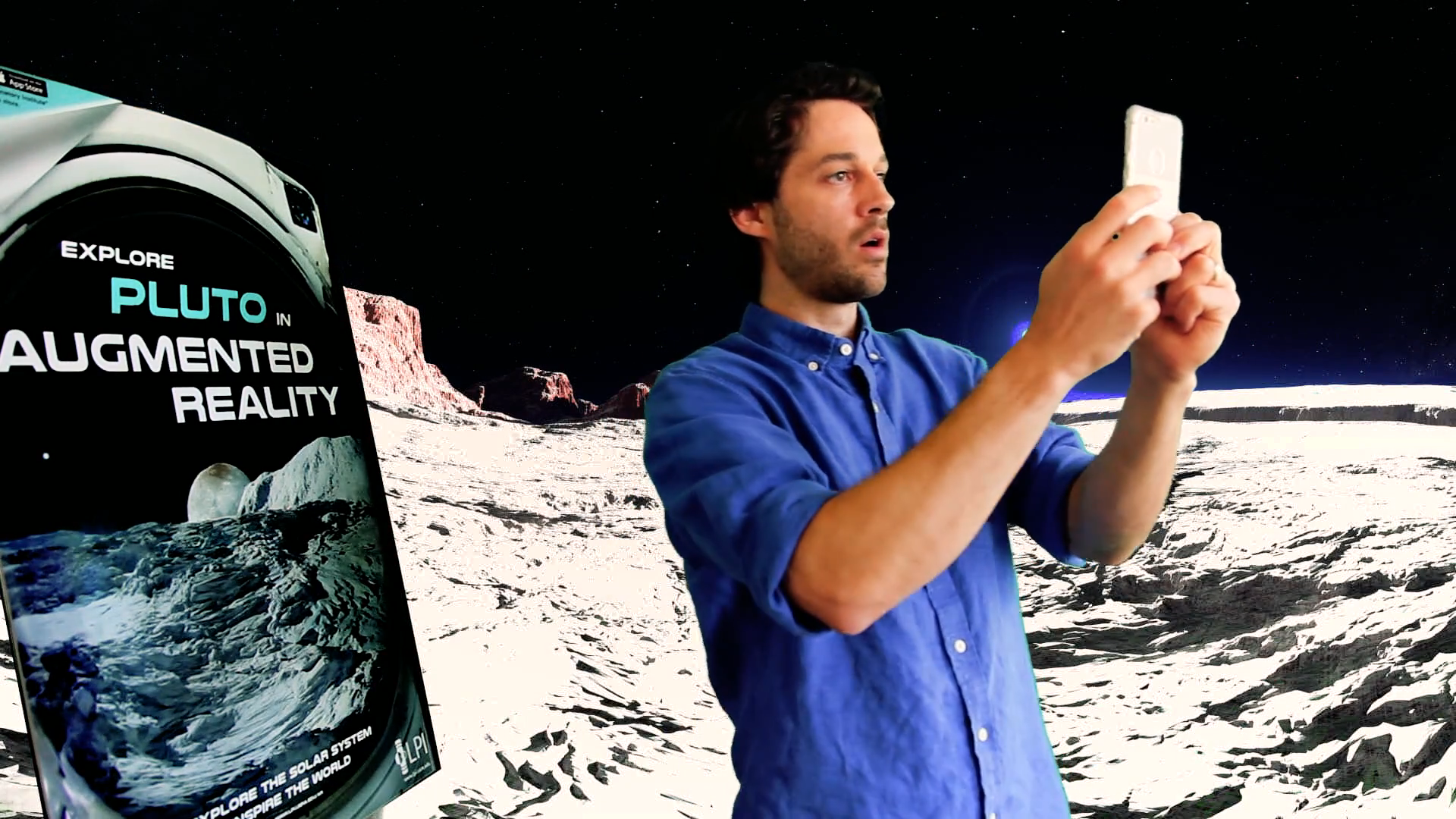Take an Amazing Solar System Tour with This Mobile Augmented-Reality App
THE WOODLANDS, Texas — Humans may never venture beyond the moon or Mars to see any other planets up close, but a new augmented-reality (AR) app provides a much simpler way to explore other worlds. No rockets required — all you need is a smartphone.
The Lunar and PlanetARy app lets you explore planets, moons and other solar system objects right in the palm of your hand. By pointing your smartphone camera at one of six downloadable graphics, you'll see 3D global maps of the moon, Mars, Pluto, Jupiter's moon Europa, Saturn and seven of its moons. The app was created by the Lunar and Planetary Institute (LPI) and is showcased here at the 49th Lunar and Planetary Science Conference.
Each destination in the Lunar and PlanetARy app was rendered using high-resolution imagery from NASA spacecraft, and each comes with its own unique features. At Pluto, for example, you can fly down to the dwarf planet's surface and observe the Elliot crater and the (informally named) al-Idrisi mountains. A 3D map of Pluto's largest moon, Charon, is also included. [Our Solar System: A Photo Tour of the Planets]
While looking at Mars in the AR app, pushing a time-machine button reveals the Red Planet as it appeared 4 billion years ago, when an enormous ocean covered much of its surface. You can also see landing sites of previous Mars missions and three proposed landing sites for NASA's Mars 2020 mission.
An interactive image titled "Asteroids" features a 3D model of Ahuna Mons, an ice volcano on Ceres, the largest object in the asteroid belt. With this same AR graphic, you can also examine and dissect a meteorite, or a chunk of an asteroid that has fallen to Earth, to see its internal structure.
If you decide to virtually visit the moon, the app even includes an AR view of the Apollo 11 command module. You can scope out all the bells and whistles inside the spacecraft, or back up to see the entire spacecraft from the outside.
The free app is available from the App Store and Google Play, and the interactive posters are free to download here from the Lunar and Planetary Institute. (You don't actually need to print the posters; pointing your camera at the digital images on a computer screen works, too.)
Breaking space news, the latest updates on rocket launches, skywatching events and more!
Email Hanneke Weitering at hweitering@space.com or follow her @hannekescience. Follow us @Spacedotcom, Facebook and Google+. Original article on Space.com.

Hanneke Weitering is a multimedia journalist in the Pacific Northwest reporting on the future of aviation at FutureFlight.aero and Aviation International News and was previously the Editor for Spaceflight and Astronomy news here at Space.com. As an editor with over 10 years of experience in science journalism she has previously written for Scholastic Classroom Magazines, MedPage Today and The Joint Institute for Computational Sciences at Oak Ridge National Laboratory. After studying physics at the University of Tennessee in her hometown of Knoxville, she earned her graduate degree in Science, Health and Environmental Reporting (SHERP) from New York University. Hanneke joined the Space.com team in 2016 as a staff writer and producer, covering topics including spaceflight and astronomy. She currently lives in Seattle, home of the Space Needle, with her cat and two snakes. In her spare time, Hanneke enjoys exploring the Rocky Mountains, basking in nature and looking for dark skies to gaze at the cosmos.


